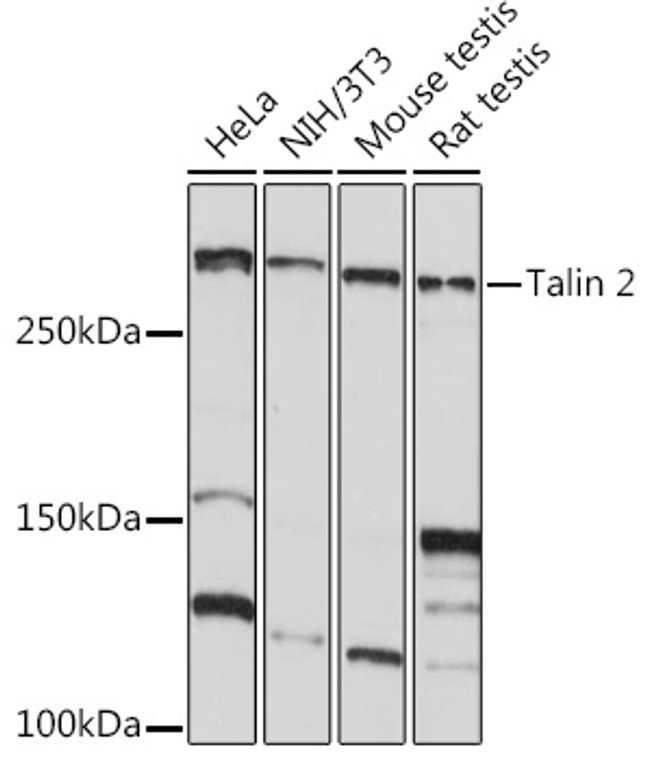| Host: |
Rabbit |
| Applications: |
WB/IHC/IF |
| Reactivity: |
Human/Mouse/Rat |
| Note: |
STRICTLY FOR FURTHER SCIENTIFIC RESEARCH USE ONLY (RUO). MUST NOT TO BE USED IN DIAGNOSTIC OR THERAPEUTIC APPLICATIONS. |
| Short Description: |
Rabbit monoclonal antibody anti-Talin 2 (350-450) is suitable for use in Western Blot, Immunohistochemistry and Immunofluorescence research applications. |
| Clonality: |
Monoclonal |
| Clone ID: |
S1MR |
| Conjugation: |
Unconjugated |
| Isotype: |
IgG |
| Formulation: |
PBS with 0.02% Sodium Azide, 0.05% BSA, 50% Glycerol, pH7.3. |
| Purification: |
Affinity purification |
| Dilution Range: |
WB 1:500-1:1000IHC-P 1:50-1:200IF/ICC 1:50-1:200 |
| Storage Instruction: |
Store at-20°C for up to 1 year from the date of receipt, and avoid repeat freeze-thaw cycles. |
| Gene Symbol: |
TLN2 |
| Gene ID: |
83660 |
| Uniprot ID: |
TLN2_HUMAN |
| Immunogen Region: |
350-450 |
| Immunogen: |
A synthetic peptide corresponding to a sequence within amino acids 350-450 of human Talin 2 (Q9Y4G6). |
| Immunogen Sequence: |
VLQEWPLTTVKRWAASPKSF TLDFGEYQESYYSVQTTEGE QISQLIAGYIDIILKKKQSK DRFGLEGDEESTMLEESVSP KKSTILQQQFNRTGKAEHGS V |
| Function | As a major component of focal adhesion plaques that links integrin to the actin cytoskeleton, may play an important role in cell adhesion. Recruits PIP5K1C to focal adhesion plaques and strongly activates its kinase activity. |
| Protein Name | Talin-2 |
| Cellular Localisation | CytoplasmCell JunctionFocal AdhesionSynapseCell MembranePeripheral Membrane ProteinCytoplasmic SideCytoskeletonFocal Adhesion Plaques And Synapses |
| Alternative Antibody Names | Anti-Talin-2 antibodyAnti-TLN2 antibodyAnti-KIAA0320 antibody |
Information sourced from Uniprot.org
12 months for antibodies. 6 months for ELISA Kits. Please see website T&Cs for further guidance













